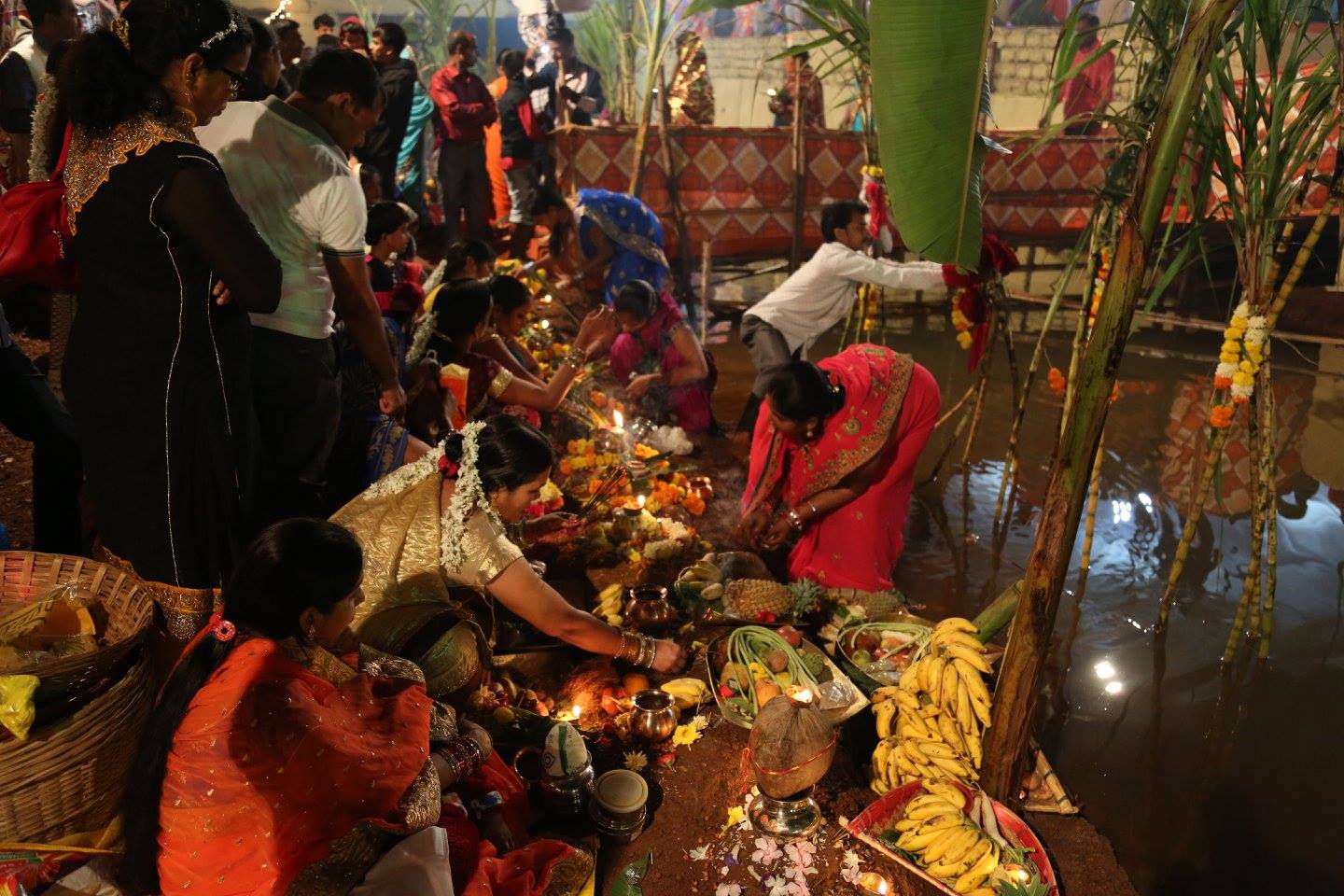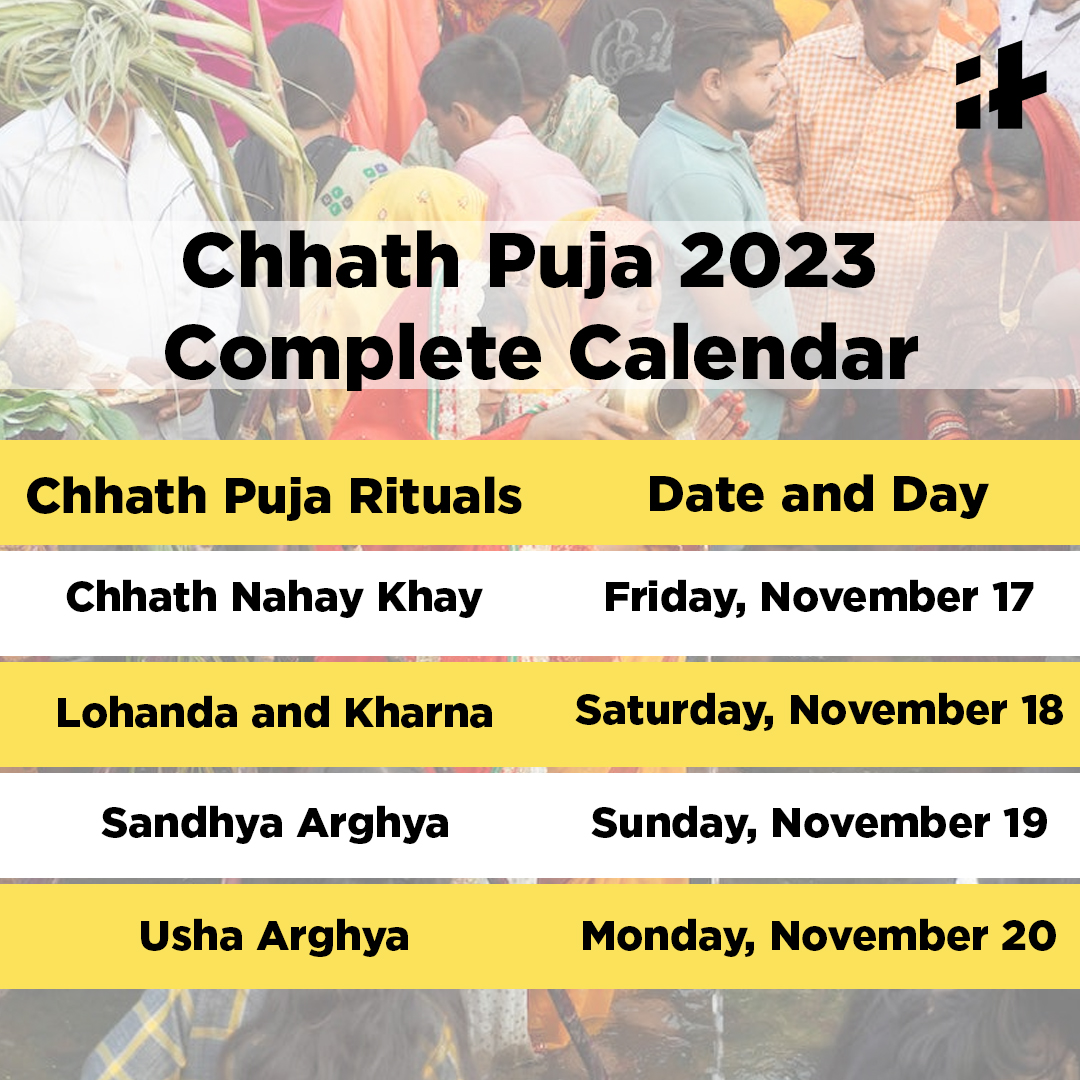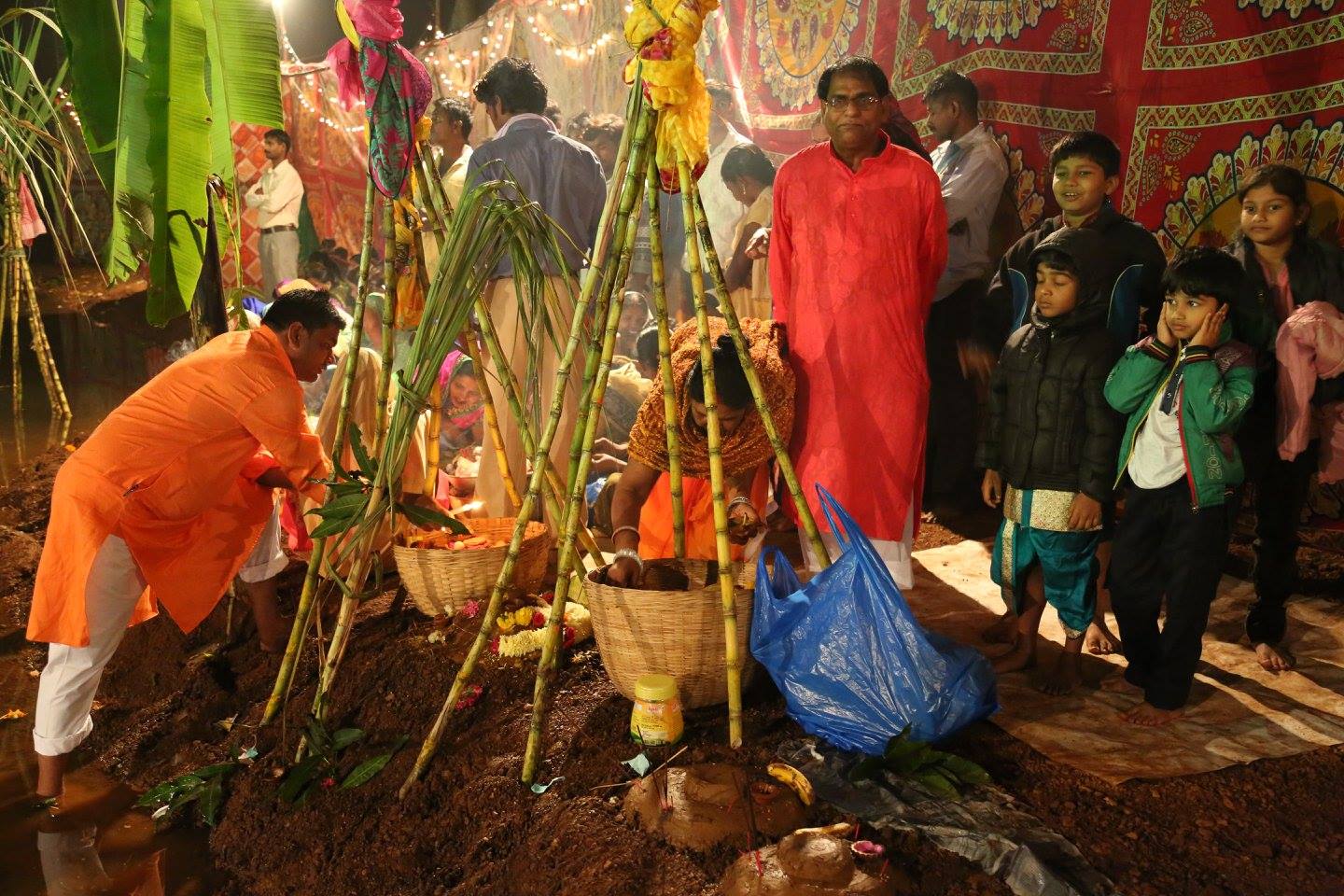NEWS & UPDATES
Chhath Puja 2024 on Thursday 7th November evening from 4.00 pm to 8.00 pm and on Friday 8th November morning 5.30am to 8.00am

Chhath is an ancient Hindu festival devoted to the Sun God, Surya, and is the only Vedic festival of its kind. It is a way to express gratitude to Surya for sustaining life on Earth and seeking blessings for specific desires. The Sun is worshipped during this festival as it symbolizes energy and life force, and it is believed that worshipping it can promote well-being, prosperity, and progress. The rigorous four-day rituals involve activities like holy bathing, fasting (Vratta) without drinking water, standing in water for extended periods, and offering prayers and offerings (Prashad and Aragh) to the rising and setting sun. These rituals also have the belief that they can help cure diseases and ensure the well-being and prosperity of family, friends, and elders.
Chhath is a festival mainly celebrated in places like Bihar, Jharkhand, Eastern UP, and Nepal’s Terai regions. But it’s also celebrated in many other parts of India, including the Northeast, Madhya Pradesh, Uttar Pradesh, Chhattisgarh, Chandigarh, ujarat, Delhi, and Mumbai. It’s even celebrated in some other countries like Mauritius, Fiji, Trinidad and Tobago, Guyana, Suriname, and Jamaica. In recent years, people in Ponda, Goa, started celebrating Chhath pooja with devotion. Initially, only 2 families began the celebrations in 2011, and as years passed, Chhath Puja Seva Samiti Ponda Goa was established. now more than 1000 families join the celebration every year with devotion and enthusiasm. We initiated this group to promote cultural and social activities and with time, Chhath Puja Seva Samiti Ponda Goa became a registered organization.
Chhath puja is held on the sixth day of the Hindu month of Kartika Shukla paksha ( sixth day of deewali ) which usually falls in October or November on our english regular calendar. It’s also celebrated in the summer, a few days after Holi in March or April, known as Chaiti Chhath. The Kartika version is more popular because it’s easier to observe during the winter, which is a festive season in India. During Chhath, people fast without water for about 36 hours continuously.
The word “chhath” means the number six in Hindi, and the festival is named after the sixth day of the Hindu lunar month Kartika. The word “chhath” comes from the Sanskrit word “Cachi,” which also means “six.”


The Goddess worshipped during the famous Chhath Puja is known as Chhathi Maiya. Chhathi Maiya is also referred to as Usha in the Vedas and is believed to be the companion of Surya, the sun god. Some scholars believe she is Surya’s beloved, while others think of her as his wife.
In the Vedas, Usha symbolizes the dawn, which is the first light of day. But in the Rig Veda, she carries a deeper, symbolic meaning. Symbolically, Usha represents the dawn of divine consciousness in an individual seeker.
During Chhath Puja, Chhathi Maiya is invoked to bestow upon us this divine consciousness, which helps us overcome the challenges in the world. This blessing is believed to lead us towards Moksha or liberation.


Chhath Puja’s rigorous rituals and practices contribute to both mental and physical detoxification. This detoxification process can lead to increased vitality, better skin health, improved eyesight, and a slower ageing process, ultimately promoting overall well-being and health.
Physical Benefits (Photo-Electro-Chemical Effects):
Mental Benefits (Photo-Electro-Psychic Effects):
Chhath Puja Seva Samiti, founded on October 20, 2013, in Ponda, Goa, is a non-profit socio-cultural organization. Its mission is to raise awareness of the rich cultural significance of Chhath Puja and bring together local communities for festivals, social events, and charitable activities.